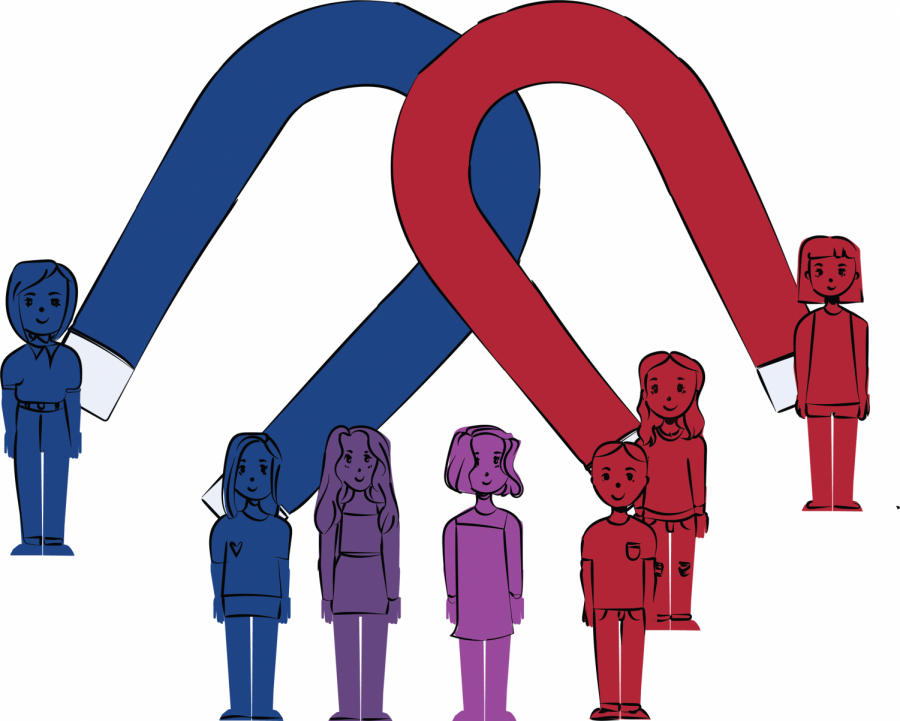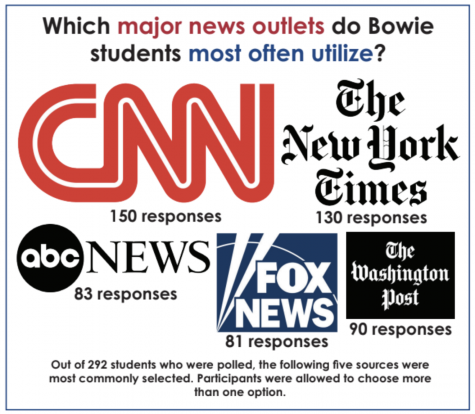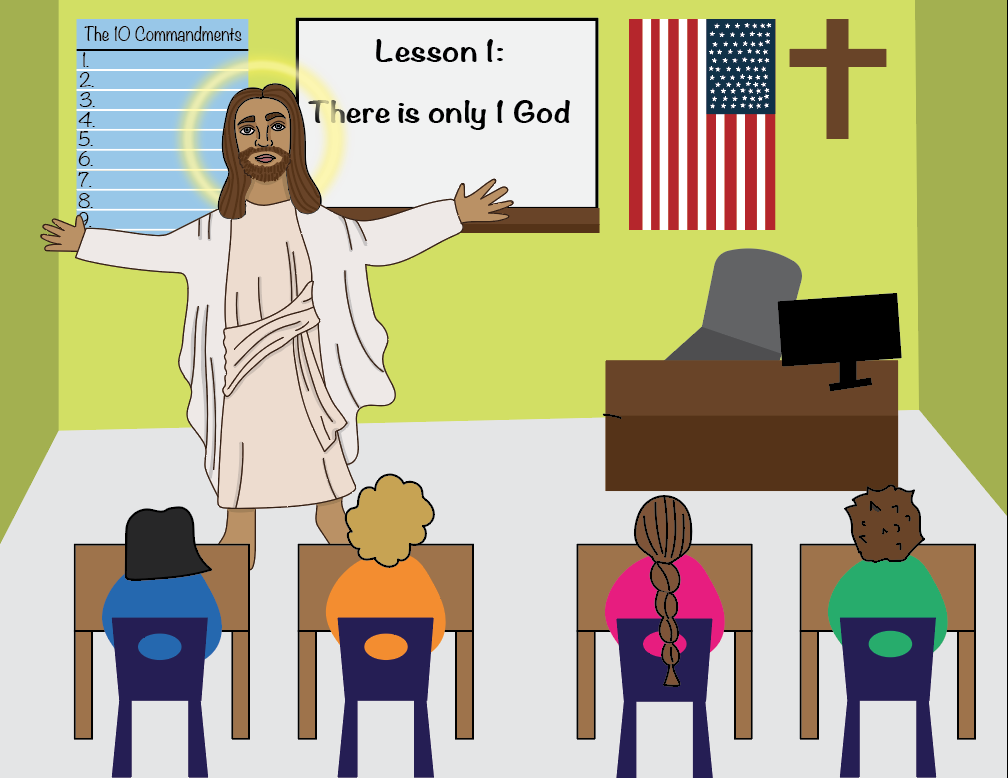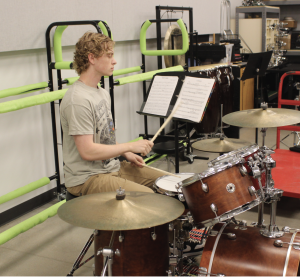America divided
Polarization doesn’t just extend to political parties. Recently, the term “media polarization” has been coined to describe the way news outlets have become more partial and are shifting people’s viewpoints further apart.
November 30, 2021
Political polarization impacted by media bias and perceptions
Senior Caroline Rasmussen has heard the same story before. The election was stolen. Her step-grandma has been sending her conspiracy videos espousing claims that Donald Trump is still the true president of the United States. Rasmussen’s story isn’t the first of its kind.
This reflects the phenomenon known as “political polarization,” the way by which political party beliefs are becoming more ideologically opposed. To exemplify this, in 2019, a study done by the Pew Research Center found that around half of Republicans think Democrats are “lazy” or “immoral.” Similarly, 75% of Democrats view Republicans as “close-minded.”
“Even just how I talk to people, if we find out we have opposing views, they immediately kind of shift how they think of me,” senior Cerelia Peterson said. “Because we have different political views, they’re more harsh to me.”
An article written by professors Filipe Campante and Daniel Hojman at Harvard University asserts that “changes in media environment can contribute to polarize or depolarize the ideological views of citizens who are exposed to it.”
“Polarization in the U.S. has a lot of different causes, and I would say the media has a lot to do with it,” history and U.S. government teacher Dalton Pool said. “Specifically, how different sources choose to cover politics, government, and just the news in general. The media has an agenda that doesn’t always match up with the best interests of the public.”
DEVELOPMENT OF MODERN MEDIA
The scope of news media used to be much smaller than it is in the 21st century. Initially, there were limited numbers of news mediums available for any given American. Print newspapers and radio stations were the predominant forms of news for the country up until the invention of the television and subsequently the internet.
“[Media’s] changed, especially in the last 150 years, because we have more sources,” Pool said. “Not just actual news media outlets, but also how we get our news and how we get our information. It used to be that there were only newspapers or only word-of-mouth, then you get the radio and that adds a new element, and then you get the television that adds a new element, and then you get the internet and that adds a new element. So as we get these different layers of news, the media has figured out how to use those different mediums.
Specifically, print newspapers have seen a large shift over time, a shift that puts their existence in jeopardy. From 2017 to 2018, just one year, the Pew Research Center reported that print newspapers saw an 8% audience decline.
“When sources like Apple news and other online media sources have become widely available, as long as you have an electronic device, I think print newspapers are seen as irrelevant,” Rasmussen said. “Especially when you can cater your news more to your interests, people would rather read something they already believe in and that affirms their beliefs.”
A recent movement in news media has been the emergence of social media and online news sources. According to the Pew Research Center, from 2019 to 2020, the number of monthly unique visitors to online news websites rose 11%, from around 29 million to 32 million. This growth is similar to that seen in social media viewership. About 53% of American adults get at least some of their news from social media.
“Now that there’s more social media and there’s more news media that has popped up, they’re all competing for views,” Cerelia said. “I wonder how much the data is skewed so you continue reading [the article], or post it, or re-share it. I feel like [news is] more for clout now then actually trying to educate the people.”
Researchers from the University of Mississippi and University of Oklahoma found that after analyzing over 1.67 million Facebook posts from 153 news outlets, that around 25.27% of the posts employed “clickbait” headlines. “Clickbait” refers to flashy headlines and articles that intend to attract viewership to the company’s website.
“A lot of [media] has to do with their desire to make money, and a lot of that leads to them either trying to choose, or narrowcast, to a specific audience, or to cover super controversial topics so they get more viewers, so as they get more clicks they get more money,” Pool said. “A great example would be the most recent infrastructure bill that’s trying to go through. A lot of people don’t know what’s inside the bill, because the media hasn’t done a great job of covering the details. Instead what they’ve done is they’ve covered the big headlines like the fact that it’s $3.5 trillion.”
Besides trying to gain profits by attracting viewers, many large companies have attempted to monopolize the media industry. There are five notable corporations that own a large portion of the news industry: the Walt Disney Company, National Amusements, Comcast, TimeWarner, and News Corp. These companies own news outlets such as CBS, ABC, ESPN, CNN, TIME, LIFE, NBC, FOX, the WSJ, the New York Post, and many more.
“News media is controlled by just a few companies, which means that the news reporting is going to be tilted towards the interests of the companies, not necessarily the interests of independent journalism,” Rasmussen said. “When that happens, you have more influence from parent companies. You have even more political polarization as parent companies direct their subordinate companies, like to what to do and promote that aligns with their malevolent interests.”
MEDIA POLARIZATION
Recently, many Americans have reported distrust in mainstream media. A digital news report done this year by the Reuters Institute found that only 29% of Americans trust the news, the lowest figure out of every country reported. This trust is especially low for conservative Americans. According to the Pew Research center, out of 30 news sources that covered political news, Republicans distrusted more than 20 of the sources.
“There’s been enough times where we’ve found out that [articles] are not true, or that things have been skewed,” Peterson said. “Media outlets are more willing than ever to skew their data, or what they’re reporting on, to get views more than anything else.”
There is a large gap between the perceived media bias between political parties. According to the Pew Research Center, 49% of Republicans and 57% of conservative Republicans see “a great deal” of media bias. This number is only 32% for Democrats and 35% for independents.
“Part of the Republican Party agenda, and one of their big speaking points, is that the media is biased,” Pool said. “At the same time, a lot of conservative Americans will look at the news sources, and they’ll see that they disagree with a large portion of them. And instead of acquainting that disagreement to maybe there’s a different perspective out there, it can be easily chalked up to, ‘oh that’s just a biased news source’ or ‘that’s a source that shouldn’t be trusted.’”
A poll by The Economist and YouGov reported that Republicans and Democrats have vastly differing trust in various news outlets. Democrats reported having the highest trust in sources like The Washington Post, CNN, MSNBC, and The New York Times, with all of their trust ratings being around 60%. This was virtually the opposite of Republicans, with their least trusted news sources being The Washington Post, The New York Times, CNN, and MSNBC, with trust levels at or below 20%.
“People will just follow all conservatives and all conservative media, or they’ll follow all Democrats and only receive that,” Peterson said. “It’s like, how are you ever gonna be able to compromise with the other side if you’re only feeding yourself one side? I genuinely don’t think conservatives all have it right. I definitely don’t think liberals or Democrats have like 100% right. It seems that our biggest problem right now, especially with the filibusters and gridlock that’s been happening, is no one’s compromising.”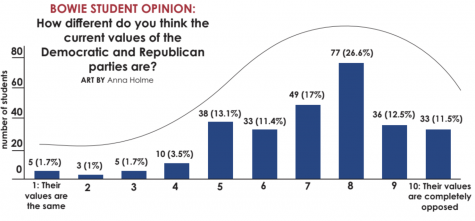
Professor of Political Science at the University of Pennsylvania Amy Gutmann and Professor of Political Philosophy at Harvard University Dennis Thompson state that a lack of political compromise comes from “principled tenacity,” the unwillingness to sacrifice, and “mutual mistrust,” which increases opposition between political forces.
“It isn’t as black and white as ‘media needs to treat the other side better,’” sophomore Will Gum said. “The point of media is for the broadcasting or media company to make money. I think that if people make an effort to complete more educated research on their own, and not via the media, then their opinions will have a more positive impact.”
GRIEVANCES WITH MODERN MEDIA
The extent to which people explore their media options is shrinking. The Pew Research center found that Americans who utilize social media as their main form of news tend to have lower political knowledge than Americans who use other forms of news.
“One of the big issues with how people consume media is they go only to one source, or only to a few sources that they tend to agree with,” Pool said. “Social media enforces a lot of that. Social media is going to surround us with people that we are friends with or that we tend to agree with, and we’re going to be regurgitating a lot of the same information. So it’s that endless feedback loop within these little bubbles of certain biases.”
The consumption of only one ideology or perspective, especially within the news, creates what is known as an “echo chamber,” where one’s beliefs are reinforced and intensified due to a lack of ingesting other viewpoints.
“It’s easier for people to just consume one side,” Peterson said. “Because of technology, we’re able to just get one viewpoint, and if I only want to see what I want to see then I can feed it to myself. It’s so easy to avoid the other side or educate yourself on both sides of the story.”
Echo chambers have the potential to fuel misinformation, especially among older generations interacting online. A study published in Science Advanced reported that Facebook users over the age of 65 shared articles from fake news outlets at a rate seven times higher than younger users. However, as social media is becoming more common, many hope America’s youth will be able to break the misinformation cycle.
“Our generation and younger generations, they’re going to be more like literate of digital sources, they know that stuff out there isn’t just 100% true all the time,” Rasmussen said. “I think that means that they’ll be less inclined to believe some sketchy stuff on the internet. But, I also think that we have a generation that’s going to be distrustful of mainstream media.”
Regardless of the future of the media, most Americans can agree that the news is important. A report done by the Knight Foundation states that 81% of Americans think news media is “critical” or “very important” to democracy. The American Press Institute asserts that “the foremost value of news is as a utility to empower the informed.”
“A healthy democracy needs reliable journalism and reporters in order to make informed decisions,” Pool said. “News outlets and news media need to be held accountable and make sure that they’re presenting accurate information and make sure that their motives line up with the best interests of the American public.”




